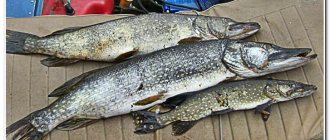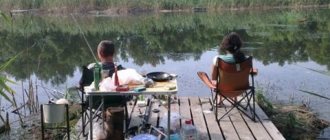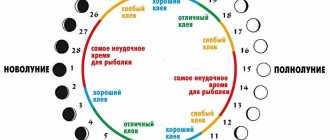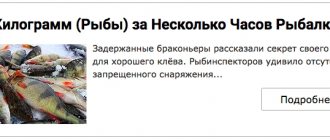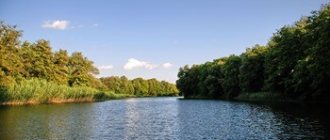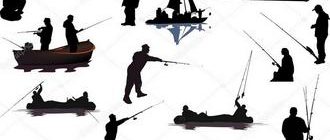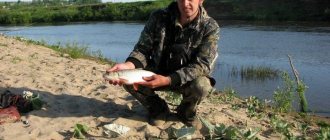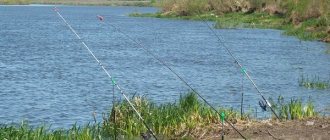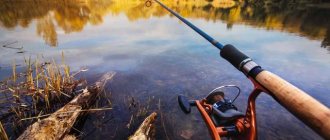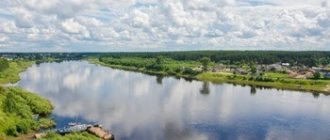Karaganda region is located in the central part of the Republic of Kazakhstan. It turns out that it is also located in the central part of the Eurasian continent. This region is home to 1,346,938 people, which is 10% of the total population of the Republic of Kazakhstan. Among this number of people there are those who prefer active recreation, which is associated with fishing, especially since all the conditions are available here.
Availability of water resources

Almost 600 water bodies of various sizes are concentrated in the Karaganda region, where you can fish and relax. In addition, there are several reservoirs in the republic. For example:
- Samarkand.
- Sherubainurinskoe.
- Kengirskoe.
- Zhezdinskoe.
In addition, up to 107 large and small rivers flow in these places. The most interesting for fishing are:
- Nura River.
- Sarysu River.
- Kulanotpes River.
- Tuyndyk River.
- Zharly River.
- Taldy River.
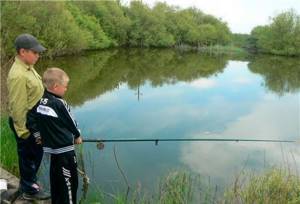
The list of water resources of this region includes 83 natural lakes and more than 400 artificial reservoirs. The most suitable for active fishing are:
- Lake Balkhash.
- Lake Kypshak.
- Lake Kiyakty.
- Lake Shoshkol.
In 1974, the Saptaev Canal was put into operation, which supplies water to enterprises in the central part of Kazakhstan. There are several reservoirs along the canal where anglers successfully catch fish.
Fishing in the Karaganda region
Fishing on Lake Balkhash
Lake Balkhash attracts fishermen from all over Kazakhstan. It is located in the southern part of the region. The main feature of this shallow reservoir is that its western part is freshwater, but its eastern part is salty . The lake is famous for its large number of fish. Many experts believe that the growth of the fish population is facilitated by the constant growth of the food supply. Phytoplankton reproduce very quickly in warm water. The following types of fish live in the lake:
- som,
- carp,
- asp,
- zander,
- crucian carp,
- roach.
Big fishing in the Karaganda region is carried out on the Balkhash islands from April to July. It is there that you can observe a very good fish bite. Ainakol Island is considered the most successful place for fishing. Many fishermen fish from the shore, but most often they manage to catch small specimens. Fishing from a boat is considered more productive. Large carp or bream can only be caught at depth.
Pike perch bites well near the islands. This is where predator lovers go. Most often they use spinning rods. To catch pike perch, you need to choose places with great depth. This is where the largest individuals hide. Sometimes it is possible to catch an asp using a spinning rod, but this species is considered very cautious.
Fans of large catfish go to the lake exclusively in the summer. They try to sail away on a boat away from human eyes. Most often they manage to catch catfish weighing 2-3 kilograms, but there are also trophy specimens.
Fish of lakes and rivers of the Karaganda region
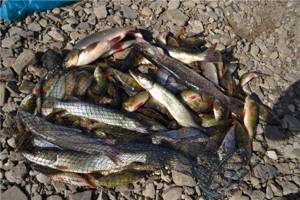
Since these areas belong to central Russia, the species composition of fish is appropriate. In addition to peaceful fish, there are predators such as pike, pike perch, asp and perch. Deep-water areas are characterized by the presence of fairly large catfish, and snakeheads are found in grassy shallow waters.
Burbot, a fan of colder waters, is much less common here, and among the peaceful fish, carp is the most common. It lives in both large and small rivers and lakes almost everywhere. Carp fishing is no less interesting here. Carp are found in almost all major waterways. Moreover, these are mainly large specimens.
Fish such as bream, crucian carp, roach and minnows are found in the catches of feeder tackle lovers, as well as lovers of a regular float rod. There are also smaller fish, such as sponge fish. It is mainly used as bait for catching predatory fish.
Although rare, sturgeon are also found here. In fast-flowing rivers, small populations of sterlet are found. Sturgeon are raised in special fish farms. You can catch this fish, as well as trout, in paid ponds. In Kazakhstan, as in other neighboring countries, paid reservoirs are appearing like mushrooms after rain. This is a business, and not a very expensive one.
Fish in Karaganda reservoirs
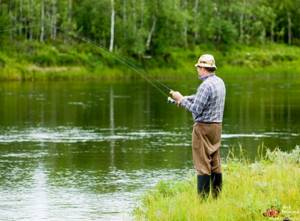
In this area, fish species characteristic of central Russia are more common. Predatory fish such as perch, pike perch, pike, asp do not give peace to peaceful species. In deep water you can find catfish of outstanding size, and in shallow water snakeheads are often hooked. It should be noted that the latter predominate in places with a lot of grass.
Burbot in such a place is a very rare exhibit and few people manage to bring home such a trophy. The white fish that predominates in the reservoir include grass carp, which can be found not only in deep water, but also in small pools. And of course, every angler constantly takes home trophy carp from the lake, which makes fishing even more interesting. It must be said that carp is also not difficult to find throughout the reservoir; it lives almost everywhere, and there is no need to look for any special place.
If we talk about fans of fishing with float tackle, they are also unlikely to leave the reservoir without a catch. Most often you come across the following on a float rod:
- bream;
- crucian carp;
- gudgeon;
- roach.
Sponge fish are often found, but, unfortunately, they are very small, and therefore most often they become bait for predatory fish.
Balkhash

An excellent reservoir for fishing, most places have long been landscaped and prepared, and most are also protected from gusts of wind, therefore, fishing will take place in comfortable conditions. It is recommended to fish at the beginning of the bay near the stones; there is a steep bank and a depth of about 2 meters. They also often occupy places overlooking the island. Fishing from a boat is also not prohibited; in this case, it is best to position yourself near the reeds. A good dirt road leads to the reservoir; along the road there are refrigeration chambers. So if the catch is not satisfactory, you can buy a few fresh fish.
Kulsa
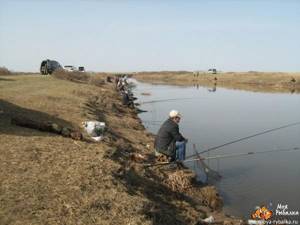
The river is not particularly large; it flows into the Big Lake Botakara, located near the village of Zhastlek. What makes the river popular is the record number of crucian carp at the end of spring. Fishing in the middle and end of May will lead to a large number of crucian carp caught, guaranteed. Having visited a reservoir on a weekend, it is unlikely that you will find a free place; usually the entire shore is dotted with fishermen. And even on such days the catch satisfies everyone. After half an hour, some reel in their fishing rods and leave the pond, since the fish they catch will not last long. It must be said that the bites are very aggressive and frequent, that is, even a beginner will leave satisfied. In addition to crucian carp, carp is a frequent representative of large fish on the river.
Nura
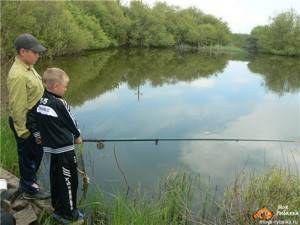
This river is considered the longest in the Karaganda region. Here you most often find bream, crucian carp, roach, and a hybrid of carp and carp. Among the predators you can find pike perch and pike perch. Every place on the reservoir is suitable for fishing, but this does not apply to the mouth of the Nura; in the place where the river flows into the Samarkand reservoir you cannot fish. There is an official ban on this. You need to know that some parts of the reservoir are privatized, and therefore, in order to obtain permission to fish in a certain area, you need to contact different organizations.
Gimanjol Dam
The Zhezkazgan highway is known to all fishing enthusiasts, as it leads to one of their favorite places, the Zhamanzhol Dam. This place is incredibly beautiful, so it is suitable not only for fishermen, but also for family holidays or entertainment with friends. Mostly crucian carp, roach, and carp are found in the reservoir, but pike and perch do not give them a quiet life. A fishing permit can be obtained locally from the ranger. Well, vacation in this place is free. The cost of fishing does not exceed the amount in all other reservoirs in the region and is 500 tenge.
Eighth hydroelectric complex
Also along the Zhezkazgan highway there is an exit to another equally beautiful and popular place for fishermen - the Aktastinskoe reservoir. But the conditions for fishing are different from other bodies of water.
- Firstly, the cost of fishing is 2000 tenge.
- Secondly, the maximum weight of fish per person is 10 kilograms per day.
This cost of fishing is explained by the fact that commercial fish, carp and peled, that is, freshwater herring, are bred in the reservoir. A fishing permit is obtained locally.
Kengir reservoir

The Karakengir River is home to crucian carp, pike, roach, ide, bream, and perch. The owners of the territory are actively trying to breed carp. Of course, the owners of a separate territory cannot monitor the movement of fish, which are constantly moving from the reservoir to deep water and back, in order to find a better place with more food. Fishing permits are issued by the Zhezkazgan Society of Hunters and Fishermen.
Channel named after Satpayev
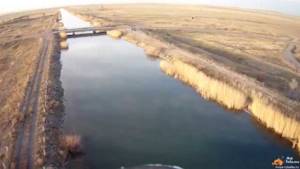
The canal has six waterworks suitable for fishing; there is a special permit for this. Each individual area is clean and large. Every year, in total, no more than 80 tons of fish are caught from six sites, of which there is a lot here. Most often you can find:
- crucian carp
- Perch
- Pike
- Cupid
- Silver carp
- Carp
- Bream
- Pike-perch
- Recently, roaches have appeared.
Fishing permits are purchased on site.
Features of summer fishing
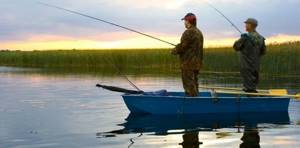
As a rule, fish bite directly depends on various factors, including natural ones. This is mainly due to the change of season. The Karaganda region begins to come to life after the arrival of spring, when the temperature begins to rise significantly. As the water temperature rises, fish also become more active and begin to migrate across the reservoir in search of food. Therefore, closer to summer, it is much easier to find its anchorage in the water column than in winter.
As a rule, predatory fish are caught on a spinning rod using various artificial baits. Silicone fish is considered the most popular these days. If you take a bait no larger than 5 cm in size, then the main predatory fish caught with such bait will be perch. If you take a slightly larger bait, you can also catch a pike perch. He prefers to hunt directly at the bottom, being within the edges or holes.
Pike perch prefers white or light green bait. Before swallowing prey, it presses it to the bottom, therefore, very often pike perch is caught by the lower jaw. When hooking, you should remember that it has a powerful mouth that is not so easy to break through, even with a hook. Therefore, the hook must be decisive and powerful. The type of wiring is selected experimentally: it is difficult to simply determine the preferences of this predator. As a rule, massive baits are chosen. It is necessary to take into account not only the speed of the current, but also the fact that it is always at depth. The heavier the bait, the faster it will reach the bottom, and the less it will be carried away by the current.
Pike perch can also be caught by trolling, but in this case it is better to use deep-sea wobblers. The most famous of them are the following models:
- Tsuribito Deep Crank.
- Bomber Model A BO7A.
- Squad Minnow

The last wobbler is well suited for catching pike. Trolling allows you to fish a huge area of a reservoir, which greatly increases the chances of catching a predator. Pike can also be caught without problems using oscillating and rotating spoons.
The following models are considered the most suitable:
- Abu Garcia.
- Blue Fox.
- Mepps.
- Daiva.
Larger specimens of pike prefer to hunt in the water column, so to catch them it is better to use wobblers with medium buoyancy, as well as sinking options. Smaller pike, and especially grass pike, prefer to hunt in shallows and reaches. To catch it, non-hook baits or baits with offset hooks are suitable.
Large catfish spend most of their time at depth in holes, emerging from them only to hunt. Therefore, to catch it, it is better to use deep-sea wobblers using the trolling method. Here, many fishermen practice catching catfish with their bare hands. As a rule, catfish can be found in burrows. Therefore, fishermen examine the bottom and, when they find a hole, stick their hand into it. The catfish grabs the person’s hand, all that remains is to connect the other hand and help pull the catfish out of the water.
No less popular is fishing for peaceful fish using bottom gear, including a feeder. Basically, hunting is carried out for carp using hair equipment. In the summer, the carp comes close to the shore and can be at a depth of no more than half a meter.
During this period, it is caught on baits of plant origin, such as corn, peas, and cake. The effect of using artificial flavors in bait can increase significantly, since carp fish respond well to attractants. At the same time, in each body of water they may have their own favorite smell. In addition to carp, other types of peaceful fish also come to feast on such ingredients.
An ordinary worm or maggot is suitable as bait, including vegetable baits using corn, semolina or ordinary bread. It is better to feed the fishing spot in advance in order to ensure an active bite in the future. Bottom gear is thrown to those areas of the water area where deep drops or boundaries of clear water and algae are noted.
Fishing in the Karaganda region. Kazakhstan.
Species composition of ichthyofauna
Fishing in the Karaganda region involves catching the same species of fish that live in most reservoirs in central Russia. The most common trophies for spinners are:
- pike;
- perch;
- zander;
- asp.
Catfish of impressive size live in deep-sea pits. In shallow, overgrown spills with a depth of no more than a meter, snakeheads are found.
In the vicinity of Karaganda you can catch a variety of white fish very well. Particularly interesting is the fishing of such representatives of the ichthyofauna as carp and silver carp. These species in local reservoirs grow to enormous sizes and bring a lot of positive emotions when fishing. Trophies of floaters usually become:
- roach;
- rudd;
- crucian carp;
- bream;
- gudgeon.
Reference! Occasionally, a sloth fish is caught on the hooks of anglers. Due to its modest size, this fish is most often used as bait when fishing for predators.
Winter fishing in the Karaganda region
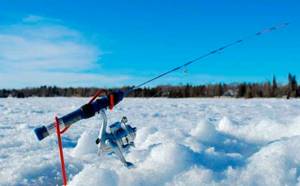
Fishing in winter has its own characteristics, since fish activity decreases significantly. In this regard, it is much more difficult to find fish than in summer, but this does not mean that there is no fishing here in winter. Lovers of winter fishing are everywhere and Kazakhstan is no exception.
Many fishermen put their summer fishing rod aside and arm themselves with winter fishing rods. As a rule, in winter the predator is caught vertically, and heavy spoons and balancers are used as bait.
The most catchy balancers:
- Aqua.
- Rapala.
- Karismax.
The most active is perch, followed by pike perch and very rarely pike. Pike perch prefers to stay in deep places with varying depths, as well as places where trees are flooded. For effective fishing, it is advisable to study the topography of the bottom of the reservoir in the summer, then in winter it will be much easier to find a school of fish.
Pike perch is caught both on balancers and rattlins, which are more popular in the West. Fishing for girders using live bait is considered no less catchy. Small perch or roach are suitable as live bait.
Fishing for peaceful fish is carried out using a variety of baited and non-attached jigs. A worm, maggot or bloodworm is used as a bait. The most active species are bream, white bream and roach. Despite the fact that carp are mostly passive in winter, sometimes they get hooked. Apparently the lack of food resources for fish in winter has an effect.
Winter fishing in Karaganda, Lake Sasykol.
Fishing on the Nura River
Some fishing lovers in Karaganda prefer to enjoy their favorite hobby on the Nura River. It is considered the deepest in the region. The following types of fish live in it:
- pike,
- perch,
- asp,
- zander,
- bream,
- roach.
Fans of spinning rods are guaranteed a good catch. Large predators quickly react to spoons and wobblers. The best bite is achieved in the morning, but some fishermen prefer sunset. There are a lot of bream in the river, but some fishermen complain that they are unable to catch large specimens. This is due to weak bait. If you want to catch trophy specimens, then you need to start luring fish a few days before fishing. It is necessary to use feeders or bottom gear.
Features of winter fishing

In winter, when the autumn glutton is behind us, the vital activity of the inhabitants of the reservoir decreases significantly. It does not disappear completely, but the search for the desired catch takes a longer period of time.
The summer fishing rod is replaced by a winter fishing rod, and the main way to catch a predator is vertical fishing. In this method, heavy spoons and balancers are used as bait.

The most common balancers are:
- Aqua
- Rapala
- Karismax
The main catch is small perch and pike perch, with pike being less common. In winter, pike perch stays in great depths, underwater places with bottom anomalies and flooded trees. If fishing takes place in a familiar body of water, preferably in the summer using an echo sounder, scout out the location of such holes, which will significantly reduce the time spent searching for pike perch in the winter.
In addition to balance beams, you can also catch pike perch in winter using rattlin. Unfortunately, this bait is more popular in the West. Winter girders are also used with success; the bait is live bait - a live fish no larger than 90mm in size. The live bait can be a small perch or roach.
The bait for peaceful fish can be a baited or baitless jig. The bait is a worm, bloodworm or maggot. This type of gear is used to successfully bite white bream, bream and roach. It is very rare to catch a small carp, since this fish is inactive in winter and is in a torpor.
